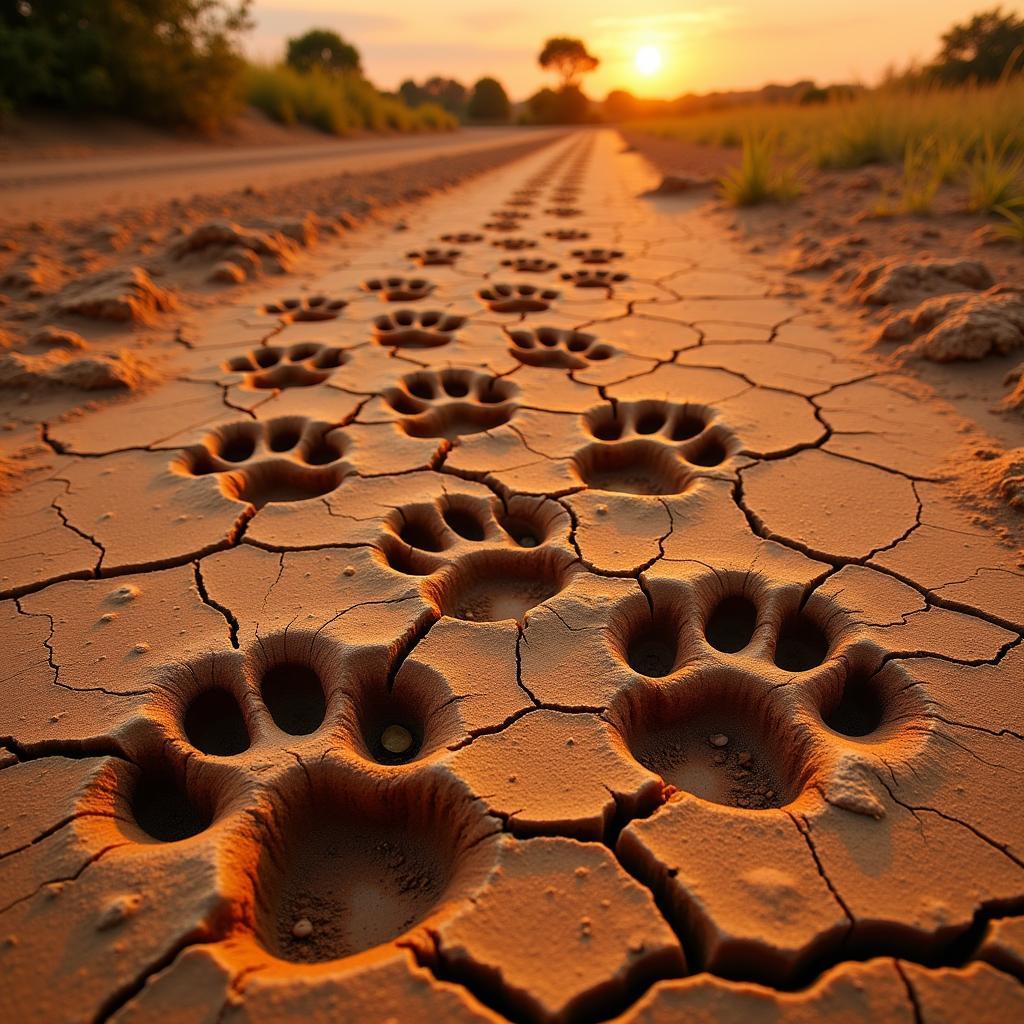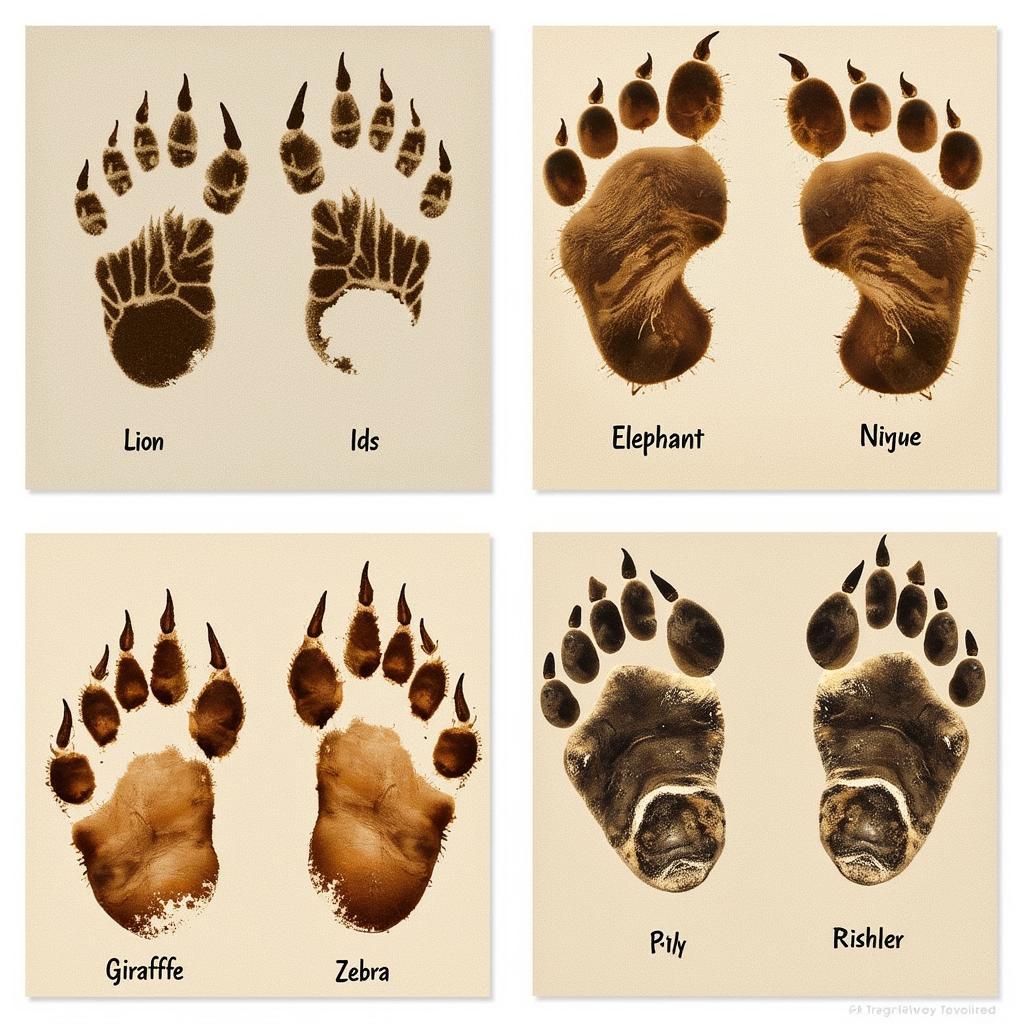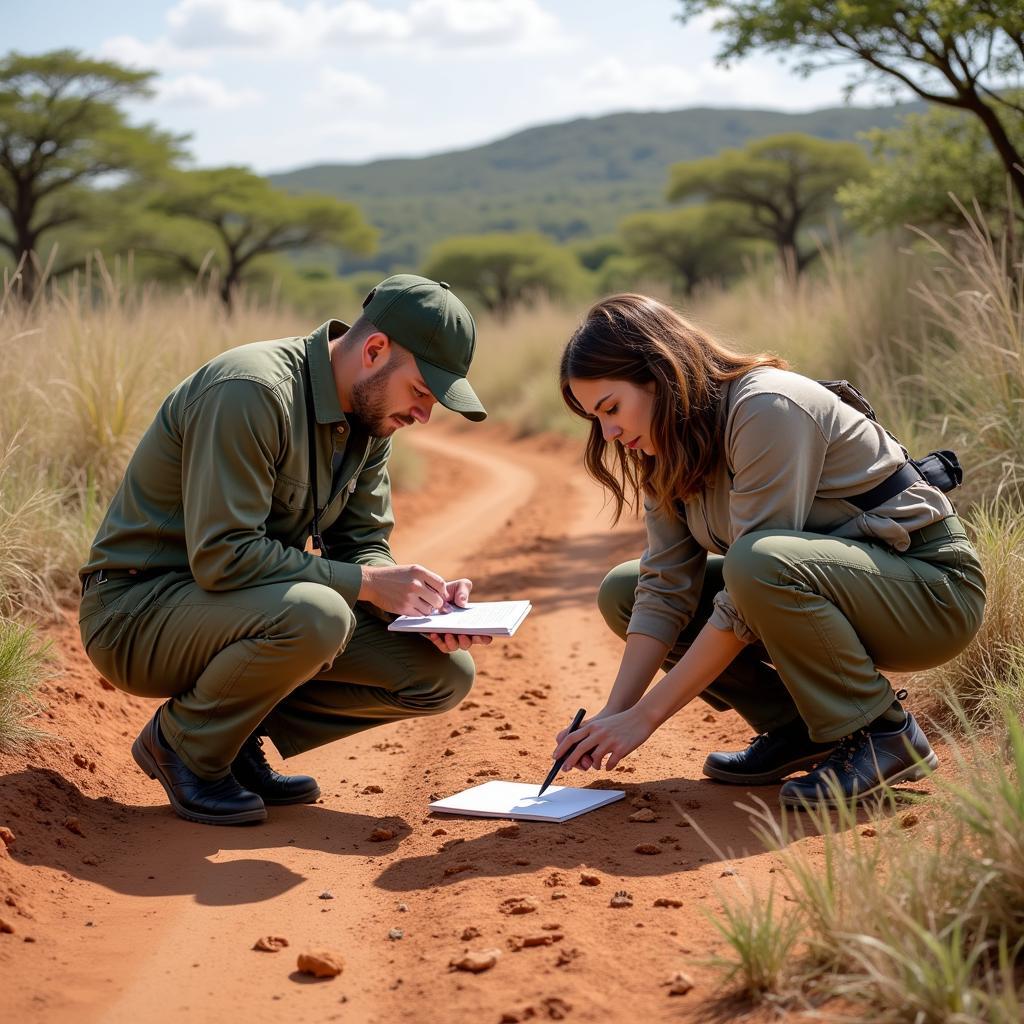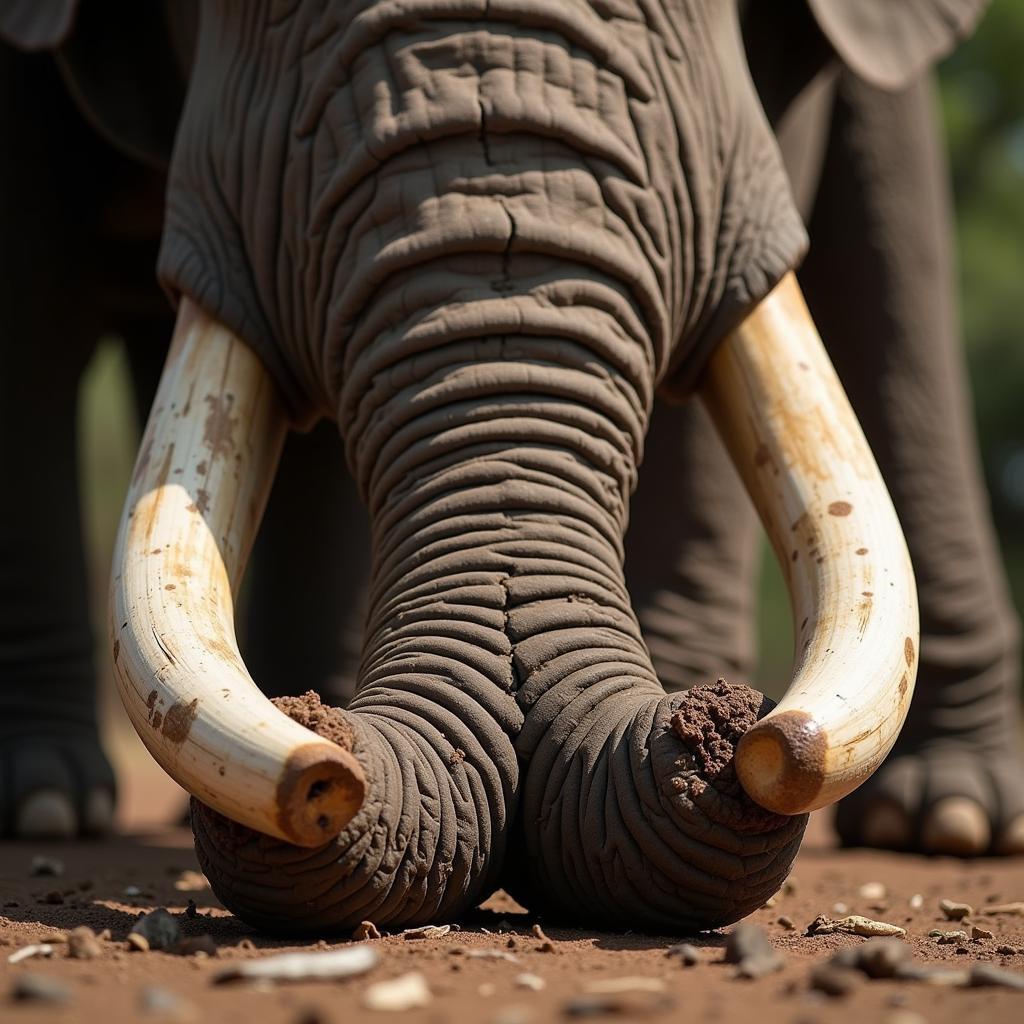Unraveling the Mysteries of African Animal Tracks
Africa, a continent teeming with diverse wildlife, offers a glimpse into the secret lives of its inhabitants through the stories etched in its soil – animal tracks. These footprints, hoofprints, and paw prints act as cryptic messages, revealing the hidden dramas of the wild. Understanding African Animal Tracks is key to unlocking a deeper appreciation for the intricate balance of life in this mesmerizing part of the world.
 African Animal Tracks in the Savanna
African Animal Tracks in the Savanna
Deciphering the Language of Tracks
Learning to identify African animal tracks is like learning a new language – one spoken not through sounds but through shapes, sizes, and patterns.
- Shape: The shape of the track offers the first clue to its maker. A rounded print with four toes might belong to a feline predator like a lion or leopard, while a heart-shaped hoofprint points towards an antelope or gazelle.
- Size: Size matters greatly in the world of tracks. A large cat print signifies a different story than a smaller one, possibly indicating a juvenile or a smaller cat species.
- Pattern: The pattern of the tracks – how they are spaced, the gait, and the direction – reveals much about the animal’s behavior. Was it walking, running, or stalking?
 Identifying African Animal Tracks
Identifying African Animal Tracks
Tracking the Big Five and Beyond
For many visitors to Africa, encountering the “Big Five” – lion, leopard, elephant, rhinoceros, and Cape buffalo – is a dream come true. But even their tracks tell compelling tales.
- Elephant Tracks: The massive, round footprints of an elephant are unmistakable, often leaving a clear trail due to their weight.
- Lion Tracks: Lion tracks, lacking claw marks due to their retractable claws, are larger than leopard tracks and often found near water sources where prey congregates.
- Giraffe Tracks: The distinctive, heart-shaped hoofprints of a giraffe are easily identifiable, with the front feet larger than the hind feet.
Beyond the Big Five, a wealth of other creatures leaves their mark on the African landscape. From the delicate tracks of birds to the slithering trails of snakes, each print adds a thread to the tapestry of life.
The Importance of Tracks in Conservation
 African Wildlife Researchers Studying Animal Tracks
African Wildlife Researchers Studying Animal Tracks
African animal tracks are not just fascinating remnants of wildlife activity; they are vital tools for conservationists. By monitoring tracks:
- Estimating Population Size: Scientists can estimate animal populations in an area based on the frequency and distribution of tracks.
- Monitoring Animal Movement: Tracking movements helps understand migration patterns, habitat use, and potential human-wildlife conflicts.
- Identifying Endangered Species: Tracking plays a crucial role in identifying and protecting endangered species, such as the critically endangered black rhinoceros.
Experiencing the Thrill of Tracking
a real wildlife life in african tribes
Across Africa, many safari operators offer guided tracking experiences, allowing visitors to step into the shoes of a tracker and learn the art of interpreting nature’s clues. Led by experienced guides, these excursions provide a unique opportunity to connect with the wilderness on a deeper level.
FAQ: Unveiling the Secrets of Animal Tracks
What is the best time of day to see animal tracks?
Early morning and late afternoon are ideal times to spot fresh tracks as animals are most active during these cooler periods.
How can I tell the difference between a lion and leopard track?
Lion tracks are generally larger than leopard tracks and lack claw marks due to their retractable claws.
Are there any dangers associated with tracking animals?
Yes, it’s important to never track animals alone. Always go with an experienced guide and respect wildlife from a safe distance.
Can I learn to track animals on my own?
While it’s best to learn from experts, there are resources available, such as field guides and online communities, that can help you start developing your tracking skills.
Why is it important to protect African wildlife?
Protecting African wildlife is crucial for maintaining biodiversity, preserving delicate ecosystems, and ensuring the well-being of future generations.
Seeking More Insights into African Wildlife?
For further exploration of the captivating world of African wildlife, be sure to check out these articles:
Ready to Embark on an African Adventure?
For assistance with planning your dream African safari and experiencing the thrill of tracking wildlife firsthand, please contact us.
Phone: +255768904061
Email: [email protected]
Address: Mbarali DC Mawindi, Kangaga, Tanzania.
Our dedicated team is available 24/7 to answer your questions and help you create an unforgettable journey into the heart of Africa.

